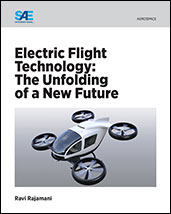Research Report
Unsettled Issues Regarding the Certification of Electric Aircraft
2021-03-26
EPR2021007
The aerospace industry is beginning to grapple with the reality of certifying electric aircraft (EA), signaling the maturing of the field. Many players are ramping up their activities to respond to imminent technical, safety, and regulatory requirements. While there are gaps in EA knowledge as well as the processes for certifying them, some leading standards development organizations (SDOs) such as SAE International, ASTM International, and RTCA—ably supported by representatives from regulatory agencies—are stepping in to address many of these issues. Of special importance are the new rule changes in the normal category (14 CFR Part 23, Amendment 64) that shift from a prescriptive philosophy to “performance-based rules.” Regarding system knowledge, there has been a trend in the use electrical energy to power systems that have long employed mechanical hydraulics.





